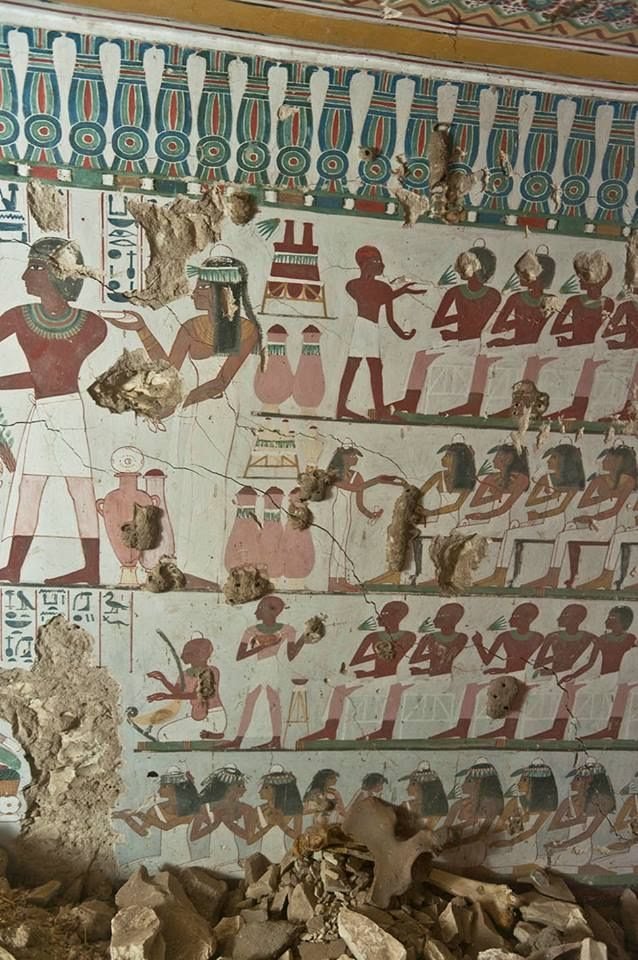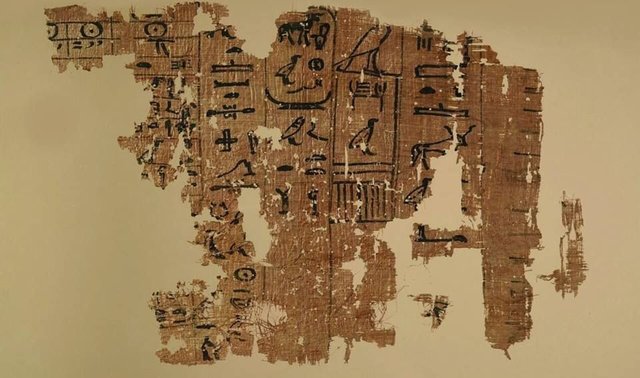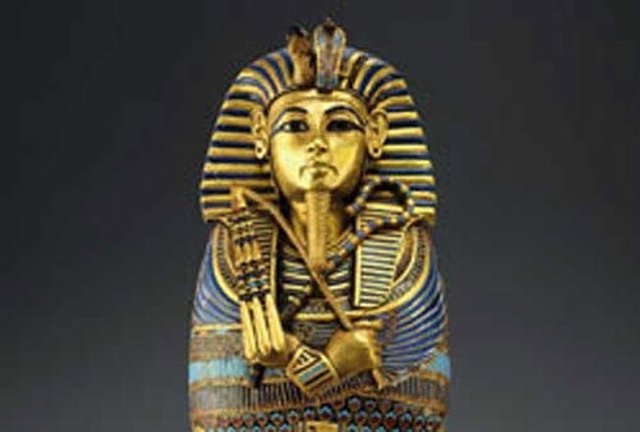
Egyptian civilization has flourished continuously since prehistoric times. While the civilization's rulers, writing, natural climate, religion and borders have changed many times over the millennia, Egypt still exists as a modern-day country.
The civilization has always been strongly connected with other parts of the world, bringing in and exporting goods, religions, food, people and ideas. At times ancient Egypt ruled territory outside the modern-day country's border, controlling territory in what is now Sudan, Cyprus, Lebanon, Syria, Israel and Palestine.
The country was also occupied by other powers — the Persians, Nubians, Greeks and Romans all conquered the country at different points in time.
A number of names were used for Egypt in ancient times. A popular ancient name for Egypt was "Kemet," which means the "black land." Scholars generally believe that this name derives from the fertile soil that is left over when the Nile flood recedes in August.
The flooding of the Nile occurred between June and August and the fertile soil it created was vital to ancient Egypt's survival, with fertility playing an important role in Egyptian religion. The burial of Tutankhamun — in which his penis was mummified erect — is but one example of how important fertility was in the rituals and beliefs of the ancient Egyptians.
The country's ancient rulers are referred to today as "pharaohs," although in ancient times they each used a series of names as part of a royal titular, wrote Ronald Leprohon, an Egyptology professor at the University of Toronto, in his book "The Great Name: Ancient Egyptian Royal Titulary" (Society of Biblical Literature, 2013). The word pharaoh actually originates from the term "per-aa" which means "the Great House," Leprohon wrote. The term was first incorporated into a royal titulary during the rule of Thutmose III (reign ca. 1479–1425 B.C.) wrote Leprohon.
When exactly early hominids first arrived in Egypt is unclear. The earliest migration of hominids out of Africa took place almost 2 million years ago, with modern humans dispersing out of Africa about 100,000 years ago. Egypt may have been used to reach Asia in some of these migrations.
Villages dependent on agriculture began to appear in Egypt about 7,000 years ago, and the civilization’s earliest written inscriptions date back about 5,200 years; they discuss the early rulers of Egypt. These early rulers include Iry-Hor, who, according to recently discovered inscriptions, founded Memphis, a city that served as Egypt’s capital for much of its history. When and how Egypt was united is unclear and is a matter of debate among archaeologists and historians.
Egypt’s climate was much wetter in prehistoric times than it is today. This means that some areas that are now barren desert were fertile. One famous archaeological site where this can be seen is at the "cave of swimmers" (as it is called today) on the Gilf Kebir plateau in southwest Egypt. The cave is now surrounded by miles of barren desert; however, it has rock art showing what some scholars interpret as people swimming. The exact date of the rock art is unclear, although scholars think that it was created in prehistoric times.

Egypt’s history has traditionally been divided into 30 (sometimes 31) dynasties. This tradition started with the Egyptian priest Manetho, who lived during the third century B.C. His accounts of ancient Egyptian history were preserved by ancient Greek writers and, until the deciphering of hieroglyphic writing in the 19th century, were one of the few historical accounts that scholars could read.
Modern-day scholars often group these dynasties into several periods. Dynasties one and two date back around 5,000 years and are often called the "early dynastic" or "archaic" period. The first pharaoh of the first dynasty was a ruler named Menes (or Narmer, as he is called in Greek). He lived over 5,000 years ago, and while ancient writers sometimes credited him as being the first pharaoh of a united Egypt we know today that this is not true — there was a group of Egyptian rulers that predated Menes. Scholars sometimes refer to these pre-Menes rulers as being part of a "dynasty zero."
Dynasties 3-6 date from roughly 2650–2150 B.C. and are often lumped into a time period called the "Old Kingdom" by modern-day scholars. During this time pyramid building techniques were developed and the pyramids of Giza were built.
From 2150–2030 B.C. (a time period that encompassed dynasties 7-10 and part of the 11) the central government in Egypt was weak and the country was often controlled by different regional leaders. Why the Old Kingdom collapsed is a matter of debate among scholars, with recent research indicating that drought and climate change played a significant role. During this time other cities and civilizations in the Middle East also collapsed, with evidence at archaeological sites indicating that a period of drought and arid climate hit sites across the Middle East.
Dynasties 12, 13, as well as part of the 11th are often called the "Middle Kingdom" by scholars and lasted from ca. 2030–1640 B.C. At the start of this dynasty, a ruler named Mentuhotep II (who reigned until about 2000 B.C.) reunited Egypt into a single country. Pyramid building resumed in Egypt, and a sizable number of texts documenting the civilization’s literature and science were recorded. Among the surviving texts is the Edwin Smith surgical papyrus, which includes a variety of medical treatments that modern-day medical doctors have hailed as being advanced for their time.
Dynasties 14-17 are often lumped into the "second intermediate period" by modern-day scholars. During this time central government again collapsed in Egypt, with part of the country being occupied by the "Hyksos" a group from the Levant (an area that encompasses modern-day Israel, Palestine, Lebanon, Jordan and Syria). One gruesome find from this time period is a series of severed hands, cut off from their human victims, which were found at a palace at the city of Avaris, the capital of Hyksos-controlled Egypt. The cut-off hands may have been presented by soldiers to a ruler in exchange for gold.

Although the Roman emperors were based in Rome, the Egyptians treated them as pharaohs. One recently excavated carving shows the emperor Claudius (reign A.D. 41-54) dressed as a pharaoh. The carving has hieroglyphic inscriptions that say that Claudius is the "Son of Ra, Lord of the Crowns," and is "King of Upper and Lower Egypt, Lord of the Two Lands."
Neither the Ptolemaic or Roman rulers are considered to be part of a numbered dynasty.
Egyptian language changed over the millennia, with scholars often sub-dividing the surviving writings into categories such as "Old Egyptian," "Middle Egyptian" and "Late Egyptian."
The Greek language became widely used in the time after Egypt was conquered by Alexander the Great. In the late 19th century, archaeologists excavated half a million papyri fragments at the ancient Egyptian town of Oxyrhynchus in southern Egypt. Dating to the early centuries A.D. scholars have found that the majority of the texts were written in Greek.
Coptic, an Egyptian language that uses the Greek alphabet, was widely used after Christianity spread throughout Egypt. As Greek and Coptic grew in popularity, the use of the hieroglyphic writing style declined and became extinct during the fifth century A.D. After A.D. 641 the Arabic language spread in Egypt and is widely used in the country today.